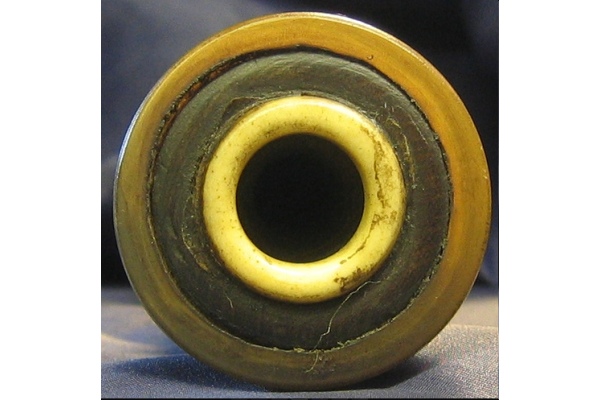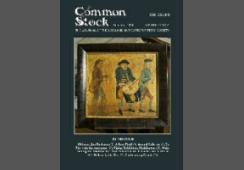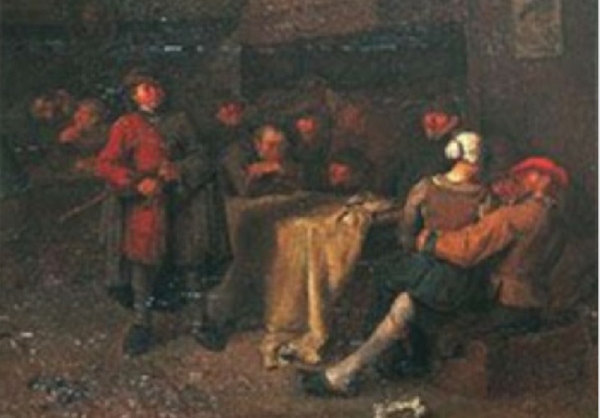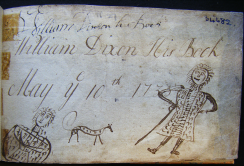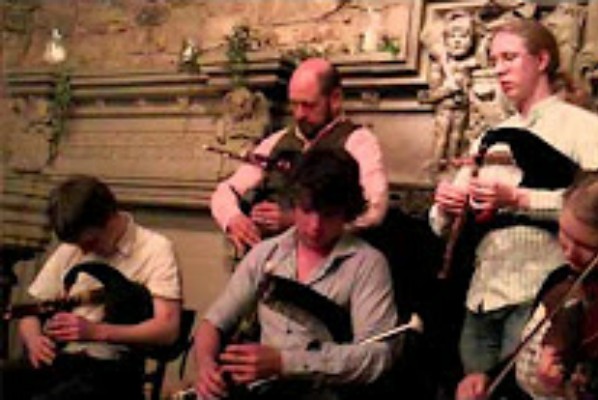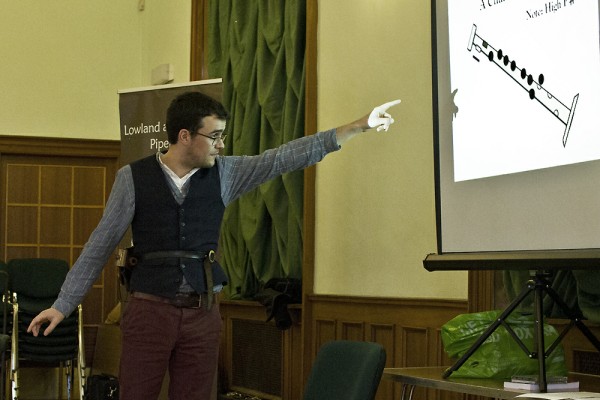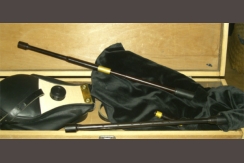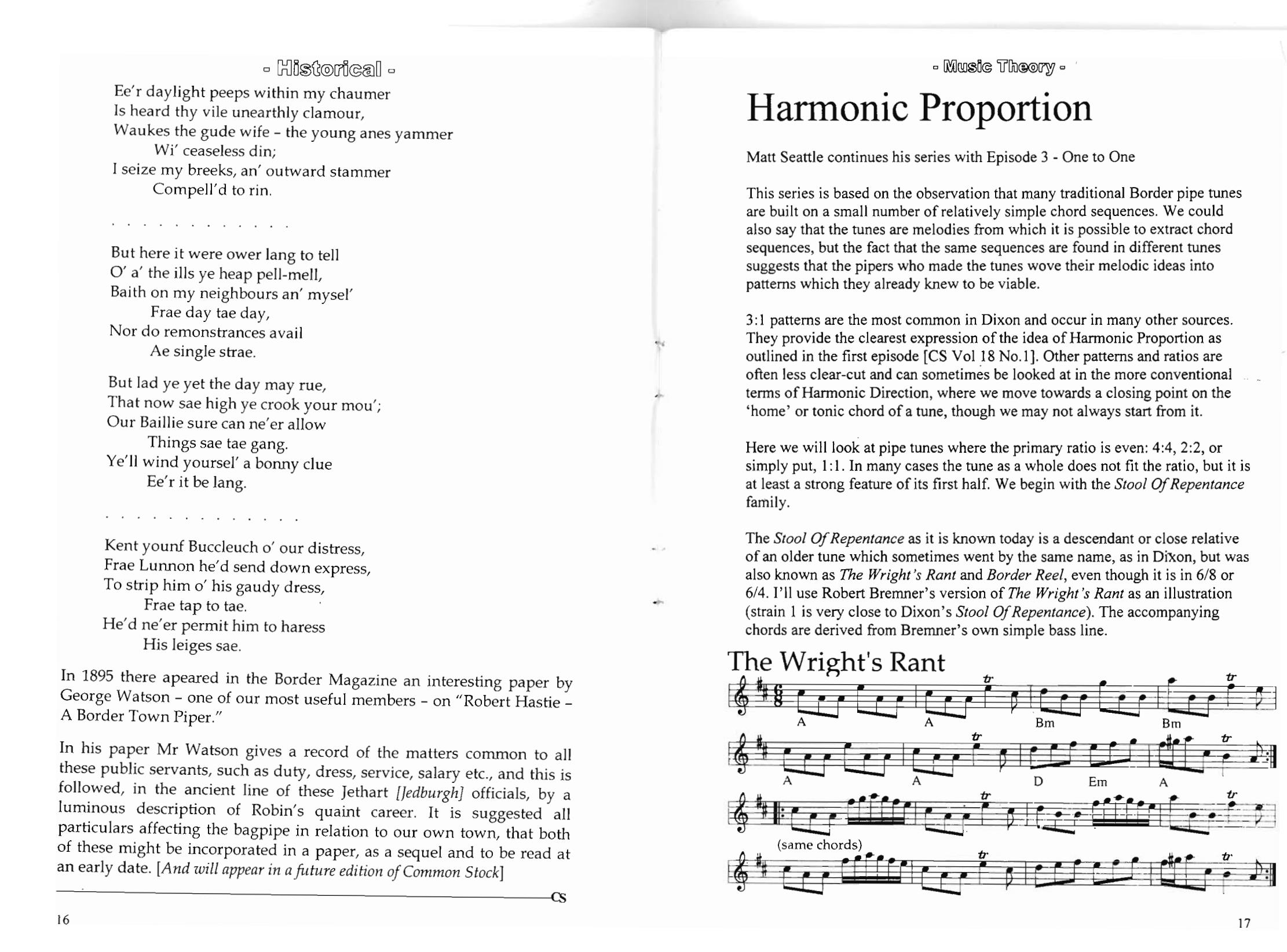
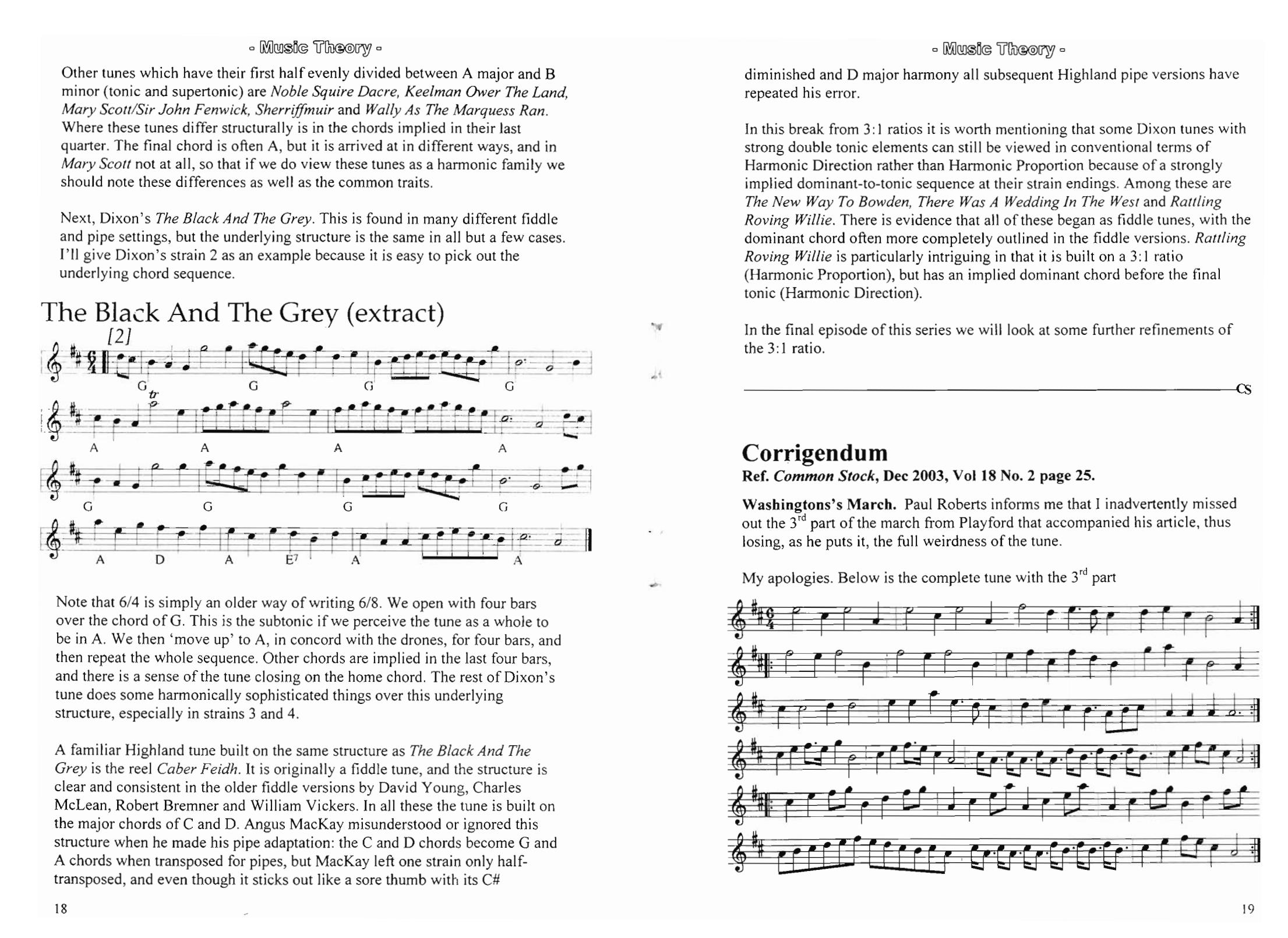
Matt Seattle continues his series with Episode 3 - One to One
This series is based on the observation that many traditional Border pipe tunes are built on a small number of relatively simple chord sequences. We could also say that the tunes are melodies from which it is possible to extract chord sequences, but the fact that the same sequences are found in different tunes suggests that the pipers who made the tunes wove their melodic ideas into patterns which they already knew to be viable.
3:1 patterns are the most common in Dixon and occur in many other sources. They provide the clearest expression of the idea of Harmonic Proportion as outlined in the first episode [CS Vol 18 No.1]. Other patterns and ratios are often less clear-cut and can sometimes be looked at in the more conventional terms of Harmonic Direction, where we move towards a closing point on the ‘home’ or tonic chord of a tune, though we may not always start from it.
Here we will look at pipe tunes where the primary ratio is even: 4:4, 2:2, or simply put, 1:1. In many cases the tune as a whole does not fit the ratio, but it is at least a strong feature of its first half. We begin with the Stool Of Repentance family.
The Stool Of Repentance as it is known today is a descendant or close relative of an older tune which sometimes went by the same name, as in Dixon, but was also known as The Wright’s Rant and Border Reel, even though it is in 6/8 or 6/4. I’ll use Robert Bremner’s version of The Wright’s Rant as an illustration (strain 1 is very close to Dixon’s Stool Of Repentance). The accompanying chords are derived from Bremner’s own simple bass line.
Other tunes which have their first half evenly divided between A major and B minor (tonic and supertonic) are Noble Squire Dacre, Keelman Ower The Land, Mary Scott/Sir John Fenwick, Sherriffmuir and Wally As The Marquess Ran. Where these tunes differ structur- ally is in the chords implied in their last quarter. The final chord is often A, but it is arrived at in different ways, and in Mary Scott not at all, so that if we do view these tunes as a har- monic family we should note these differences as well as the common traits.
Next, Dixon’s The Black And The Grey. This is found in many different fiddle and pipe set- tings, but the underlying structure is the same in all but a few cases. I’ll give Dixon’s strain 2 as an example because it is easy to pick out the underlying chord sequence.
Note that 6/4 is simply an older way of writing 6/8. We open with four bars over the chord of G. This is the subtonic if we perceive the tune as a whole to be in A. We then ‘move up’ to A, in concord with the drones, for four bars, and then repeat the whole sequence. Other chords are implied in the last four bars, and there is a sense of the tune closing on the home chord. The rest of Dixon’s tune does some harmonically sophisticated things over this un- derlying structure, especially in strains 3 and 4.
A familiar Highland tune built on the same structure as The Black And The Grey is the reel Caber Feidh. It is originally a fiddle tune, and the structure is clear and consistent in the older fiddle versions by David Young, Charles McLean, Robert Bremner and William Vickers. In all these the tune is built on the major chords of C and D. Angus MacKay misunderstood or ignored this structure when he made his pipe adaptation: the C and D chords become G and A chords when transposed for pipes, but MacKay left one strain only half-transposed, and even though it sticks out like a sore thumb with its C# diminished and D major harmony all subsequent Highland pipe versions have repeated his error.
In this break from 3:1 ratios it is worth mentioning that some Dixon tunes with strong double tonic elements can still be viewed in conventional terms of Harmonic Direction rather than Harmonic Proportion because of a strongly implied dominant-to-tonic sequence at their strain endings. Among these are The New Way To Bowden, There Was A Wedding In The West and Rattling Roving Willie. There is evidence that all of these began as fiddle tunes, with the dominant chord often more completely outlined in the fiddle versions.
Rattling Roving Willie is particularly intriguing in that it is built on a 3:1 ratio (Harmonic Proportion), but has an implied dominant chord before the final tonic (Harmonic Direction).
In the final episode of this series we will look at some further refinements of the 3:1 ratio.
Corrigendum
Ref. Common Stock, Dec 2003, Vol 18 No. 2 page 25.
Washingtons’s March. Paul Roberts informs me that I inadvertently missed out the 3rd part of the march from Playford that accompanied his article, thus losing, as he puts it, the full weirdness of the tune.
My apologies. Below is the complete tune with the 3rd part
